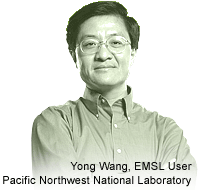Become an EMSL User

Give your research the benefit of the unique and state-of-the-art equipment and leading experts associated with EMSL. Researchers may use EMSL's resources at no cost if results are shared in the open literature.
EMSL News & Events View All
- Yanwen Zhang Named to Journal's Advisory Editorial Board [.pdf, 89kb]
- Baer named AAAS Fellow [.pdf, 90kb]
- Recent patent describes a new method to separate and characterize ions [.pdf, 103kb]
- Little fish, big river [.pdf, 88kb]





